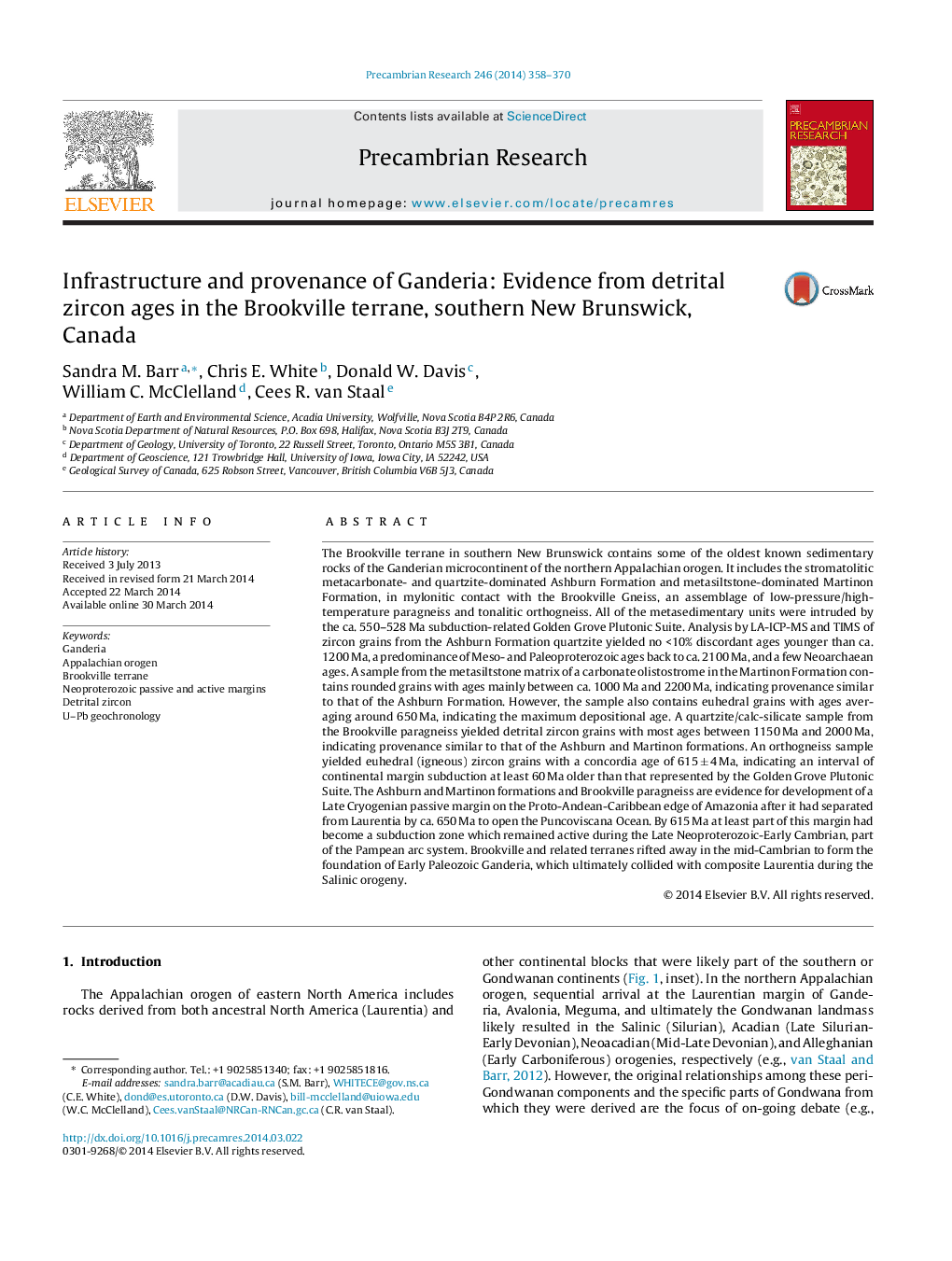| کد مقاله | کد نشریه | سال انتشار | مقاله انگلیسی | نسخه تمام متن |
|---|---|---|---|---|
| 6442319 | 1639628 | 2014 | 13 صفحه PDF | دانلود رایگان |
عنوان انگلیسی مقاله ISI
Infrastructure and provenance of Ganderia: Evidence from detrital zircon ages in the Brookville terrane, southern New Brunswick, Canada
ترجمه فارسی عنوان
زیربنای و ماندگاری گاندریا: شواهد از سنسورهای زنجیره خزنده در ترروان بروکویل، نیوبرانزویک جنوبی، کانادا
دانلود مقاله + سفارش ترجمه
دانلود مقاله ISI انگلیسی
رایگان برای ایرانیان
کلمات کلیدی
موضوعات مرتبط
مهندسی و علوم پایه
علوم زمین و سیارات
ژئوشیمی و پترولوژی
چکیده انگلیسی
The Brookville terrane in southern New Brunswick contains some of the oldest known sedimentary rocks of the Ganderian microcontinent of the northern Appalachian orogen. It includes the stromatolitic metacarbonate- and quartzite-dominated Ashburn Formation and metasiltstone-dominated Martinon Formation, in mylonitic contact with the Brookville Gneiss, an assemblage of low-pressure/high-temperature paragneiss and tonalitic orthogneiss. All of the metasedimentary units were intruded by the ca. 550-528 Ma subduction-related Golden Grove Plutonic Suite. Analysis by LA-ICP-MS and TIMS of zircon grains from the Ashburn Formation quartzite yielded no <10% discordant ages younger than ca. 1200 Ma, a predominance of Meso- and Paleoproterozoic ages back to ca. 2100 Ma, and a few Neoarchaean ages. A sample from the metasiltstone matrix of a carbonate olistostrome in the Martinon Formation contains rounded grains with ages mainly between ca. 1000 Ma and 2200 Ma, indicating provenance similar to that of the Ashburn Formation. However, the sample also contains euhedral grains with ages averaging around 650 Ma, indicating the maximum depositional age. A quartzite/calc-silicate sample from the Brookville paragneiss yielded detrital zircon grains with most ages between 1150 Ma and 2000 Ma, indicating provenance similar to that of the Ashburn and Martinon formations. An orthogneiss sample yielded euhedral (igneous) zircon grains with a concordia age of 615 ± 4 Ma, indicating an interval of continental margin subduction at least 60 Ma older than that represented by the Golden Grove Plutonic Suite. The Ashburn and Martinon formations and Brookville paragneiss are evidence for development of a Late Cryogenian passive margin on the Proto-Andean-Caribbean edge of Amazonia after it had separated from Laurentia by ca. 650 Ma to open the Puncoviscana Ocean. By 615 Ma at least part of this margin had become a subduction zone which remained active during the Late Neoproterozoic-Early Cambrian, part of the Pampean arc system. Brookville and related terranes rifted away in the mid-Cambrian to form the foundation of Early Paleozoic Ganderia, which ultimately collided with composite Laurentia during the Salinic orogeny.
ناشر
Database: Elsevier - ScienceDirect (ساینس دایرکت)
Journal: Precambrian Research - Volume 246, June 2014, Pages 358-370
Journal: Precambrian Research - Volume 246, June 2014, Pages 358-370
نویسندگان
Sandra M. Barr, Chris E. White, Donald W. Davis, William C. McClelland, Cees R. van Staal,
